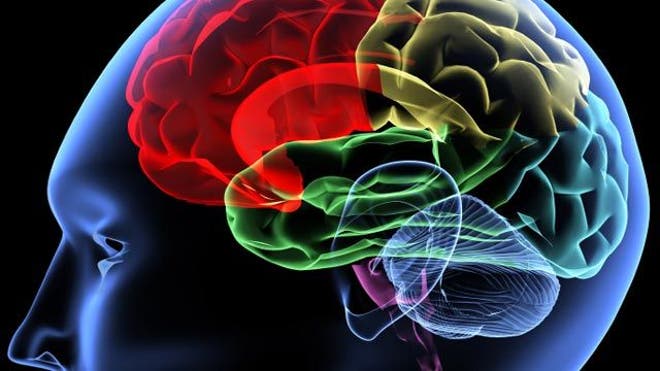Fluctuations in electrical activity may also allow the brain to form thoughts and memories.
One of the biggest puzzles in neuroscience is how our brains encode
thoughts, such as perceptions and memories, at the cellular level. Some
evidence suggests that ensembles of neurons represent each unique piece
of information, but no one knows just what these ensembles look like, or
how they form.
A new study from researchers at MIT and Boston
University (BU) sheds light on how neural ensembles form thoughts and
support the flexibility to change one’s mind. The research team, led by
Earl Miller, the Picower Professor of Neuroscience at MIT, identified
groups of neurons that encode specific behavioral rules by oscillating
in synchrony with each other.
The results suggest that the
nature of conscious thought may be rhythmic, according to the
researchers, who published their findings in the Nov. 21 issue of
Neuron.
“As
we talk, thoughts float in and out of our heads. Those are all
ensembles forming and then reconfiguring to something else. It’s been a
mystery how the brain does this,” says Miller, who is also a member of
MIT’s Picower Institute for Learning and Memory. “That’s the fundamental
problem that we’re talking about — the very nature of thought itself.”
Rules for behaviorThe
researchers identified two neural ensembles in the brains of monkeys
trained to respond to objects based on either their color or
orientation. This task requires cognitive flexibility — the ability to
switch between two distinct sets of rules for behavior.
“Effectively
what they’re doing is focusing on some parts of information in the
world and ignoring others. Which behavior they’re doing depends on the
context,” says Tim Buschman, an MIT postdoc and one of the lead authors
of the paper.
As the animals switched between tasks, the
researchers measured the brain waves produced in different locations
throughout the prefrontal cortex, where most planning and thought takes
place. Those waves are generated by rhythmic fluctuations of neurons’
electrical activity.
When the animals responded to objects based
on orientation, the researchers found that certain neurons oscillated at
high frequencies that produce so-called beta waves. When color was the
required rule, a different ensemble of neurons oscillated in the beta
frequency. Some neurons overlapped, belonging to more than one group,
but each ensemble had its own distinctive pattern.
Interestingly,
the researchers also saw oscillations in the low-frequency alpha range
among neurons that make up the orientation rule ensemble, but only when
the color rule was being applied. The researchers believe that the alpha
waves, which have been associated with suppression of brain activity,
help to quiet the neurons that trigger the orientation rule.
“What
this suggests is that orientation was dominant, and color was weaker.
The brain was throwing this blast of alpha at the orientation ensemble
to shut it up, so the animal could use the weaker ensemble,” Miller
says.
The findings could explain how the brain can create any
appropriate behavioral response to the countless possible combinations
of stimuli, rules and required actions, says Pascal Fries, director of
the Ernst Strungmann Institute for Neuroscience in Frankfurt, Germany.
“We
likely compose the appropriate neuronal assembly on the fly through
synchronization,” says Fries, who was not part of the research team.
“The number of combinatorial possibilities is enormous, just like the
number of possible 10-digit telephone numbers is.”
Eric
Denovellis, a graduate student at Boston University, is also a lead
author of the paper. Other authors are Cinira Diogo, a former Picower
Institute postdoc, and Daniel Bullock, a professor of cognitive and
neural systems at BU.
Oscillation as consciousnessThe
researchers are now trying to figure out how these neural ensembles
coordinate their activity as the brain switches back and forth between
different rules, or thoughts. Some neuroscientists have theorized that
deeper brain structures, such as the thalamus, handle this coordination,
but no one knows for sure, Miller says. “It’s one of the biggest
mysteries of cognition, what controls your thoughts,” he says.
This work could also help unravel the neural basis of consciousness.
“The
most fundamental characteristic of consciousness is its limited
capacity. You only can hold a very few thoughts in mind simultaneously,”
Miller says. These oscillations may explain why that is: Previous
studies have shown that when an animal is holding two thoughts in mind,
two different ensembles oscillate in beta frequencies, out of phase with
one another.
“That immediately suggests why there’s a limited
capacity to consciousness: Only so many balls can be kept in the air at
the same time, only a limited amount of information can fit into one
oscillatory cycle,” Miller says. Disruptions of these oscillations may
be involved in neurological disorders such as schizophrenia; studies
have shown that patients with schizophrenia have reduced beta
oscillations.
The research was funded by the National Science Foundation and the National Institute of Mental Health.



 The hunt for brain injury treatments has suffered a big
disappointment in a major study that found zero benefits from a
supplement that the U.S. military had hoped would help wounded troops.
The hunt for brain injury treatments has suffered a big
disappointment in a major study that found zero benefits from a
supplement that the U.S. military had hoped would help wounded troops. Brainiac under the microscope … Albert Einstein's brain had extra convolutions and folds.
Brainiac under the microscope … Albert Einstein's brain had extra convolutions and folds.